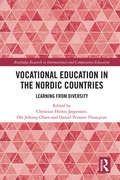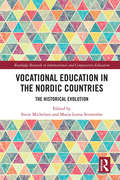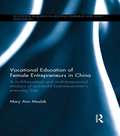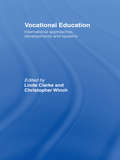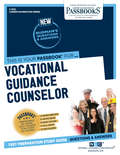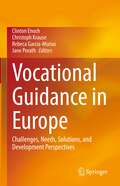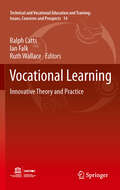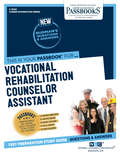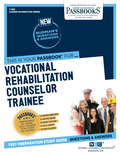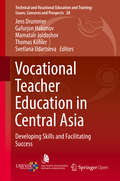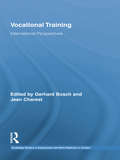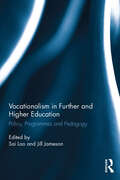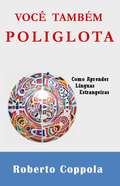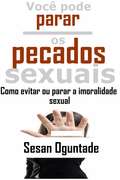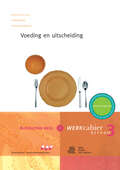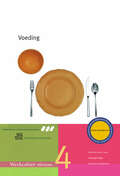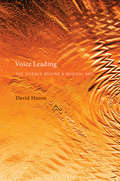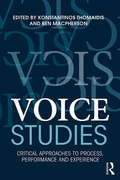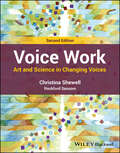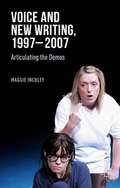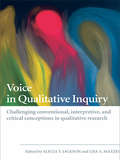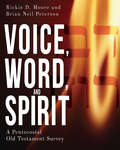- Table View
- List View
Vocational Education in the Nordic Countries: Learning from Diversity (Routledge Research in International and Comparative Education)
by Christian Helms Jørgensen Ole Johnny Olsen Daniel Persson ThunqvistVocational Education in the Nordic Countries: Learning from Diversity is the second of two books that disseminates new and systematic knowledge on the strengths and weaknesses of the different models of vocational education and training (VET) in four Nordic countries. Vocational education in Europe has resisted standardisation to a higher degree than other fields of education, and during the last decade, there has been a growth in international, comparative VET research. While the Nordic countries provide an ideal case for comparative education studies, the literature in English on the Nordic VET systems is at present very limited. This book provides thorough examinations of VET in Sweden, Denmark, Norway and Finland. Each section examines the current challenges for VET, compares how these challenges are managed, and explores recent reforms and institutional innovations. Contributors also analyse institutions and policies at the national level and include comparative studies of two occupations at the micro-level in the four countries. The book explores what can be learned from the diversity of the VET systems in the Nordic countries, which otherwise have many similarities and share a common heritage in education policy. This volume will help strengthen the knowledge base required for transnational policy learning, and for developing vocational education internationally for the future. As a result, the book will be of interest to researchers, academics and postgraduate students involved in the study of vocational education, educational studies and educational policy, as well as policy makers.
Vocational Education in the Nordic Countries: The Historical Evolution (Routledge Research in International and Comparative Education)
by Marja-Leena Stenström Svein MichelsenVocational Education in the Nordic Countries: The Historical Evolution is the first of two books that disseminate new and systematic knowledge on the strengths and weaknesses of the different models of vocational education and training (VET) in four Nordic countries. Vocational education in Europe has resisted standardisation to a higher degree than other fields of education, and during the last decade, there has been a growth in international, comparative VET research. While the Nordic countries provide an ideal case for comparative education studies, the literature in English on the Nordic VET systems is at present very limited. This first book provides thorough examinations of VET in Sweden, Denmark, Norway and Finland over 150 years. Each section examines the historical evolution of VET at upper secondary level in one of the four Nordic countries. Contributors also analyse how each country have tried to reform their respective VET systems, and compare the paths which each nation has taken. The book explores what can be learned from the diversity of the VET-systems in the Nordic countries, which otherwise have many similarities and share a common heritage in education policy. This volume will help strengthen the knowledge base required for transnational policy learning, and for developing vocational education internationally for the future. It will be of interest to researchers, academics and postgraduate students involved in the study of vocational education, educational studies and educational policy, education planners and teachers educators.
Vocational Education of Female Entrepreneurs in China: A multitheoretical and multidimensional analysis of successful businesswomen's everyday lives (Routledge Research in Lifelong Learning and Adult Education)
by Mary Ann MaslakThis book examines the ways in which formal and non-formal education can contribute to women’s successful design, development and operation of small businesses in rural settings. Calling on varied, pertinent social theories, the book examines profitable businesses operated by Dongxiang Muslim women in the southern Gansu province of northwestern China. The author explains the multifaceted formula for women's challenges and successes in their business endeavours and goal for financial security. It argues that informal learning is the most important type of education to employ knowledge and skills to earn a living in general, and design and operate small businesses by women in rural areas in particular. The book concludes with an original, timely and necessary model for education that could be utilized by the women in this work; one that positions informal education as the primary conduit for successful entrepreneurial work and combines elements of both formal and non-formal educational principles and practices, thus offering support for the successful operation of women's businesses.
Vocational Education: International Approaches, Developments and Systems
by Christopher Winch Linda ClarkeVocational education and training (VET) have a key role to play in raising skill levels and improving a society’s productivity. In this important new book, a team of international experts argue that too often national VET policy has been formulated in ignorance of historical and political developments in other countries and without proper consideration of the social objectives that it might help achieve. Examining a wide range of contrasting international approaches and development strategies, this book demonstrates the central role of the state in implementing an effective system of VET and assesses the extent to which different VET policies can promote equality in the labour market and social justice. Key themes include: the broader educational and social aims of VET the nature of learning in vocational contexts the historical development of VET in the UK, US, Australia, France, Germany, the Netherlands and elsewhere. Including a full range of case-studies and practical examples, this book is essential reading for all students, researchers and practitioners with an interest in vocational education and training, industrial and labour relations or social policy.
Vocational Guidance Counselor: Passbooks Study Guide (Career Examination Series)
by National Learning CorporationThe Vocational Guidance Counselor Passbook® prepares you for your test by allowing you to take practice exams in the subjects you need to study. It provides hundreds of questions and answers in the areas that will likely be covered on your upcoming exam.
Vocational Guidance in Europe: Challenges, Needs, Solutions, and Development Perspectives
by Jane Porath Clinton Enoch Christoph Krause Rebeca Garcia-MuriasThe situation for career counselors today is particularly complex. Transformational areas such as the Corona pandemic, the climate crisis, the economic situation, and an aging population are bringing rapid changes to the demands of the labor market.This book addresses the challenges in the European labor market from the multinational perspective of career counselors. It includes multiple contributions from different countries that address the country-specific challenges that generate support and development needs for counselors. Measures, solution strategies and future forecasts are included. The contributions are based on the Academia+ project, in which a total of three online training series for career counselors from across Europe on the topics of "Counseling Migrants and Refugees," "Future Jobs," and "Demographic Change" were conducted and evaluated. The book is intended to be a guide for professionals in the vocational training field and to facilitate and support a practice-oriented initial interview from the counselor's point of view.
Vocational Learning: Innovative Theory and Practice
by Ralph Catts Ian Falk Ruth WallaceEffective knowing and learning for vocational purposes must take account of the wide range of variables that impact on knowledge formation and that promote learning. In light of those many variables, the formal sector of technical and vocational education and training (TVET) must constantly ask itself what it could and should do to better provide vocational learning for those people likely to pursue learning via the informal sector. This book addresses that question. Vocational Learning: Innovative Theory and Practice discusses four theoretical aspects of vocational learning that support understanding of vocational learning processes and practices: the situations of vocational learning; the power and roles of social networks and identity in vocational learning; knowing and knowledge management processes; and the implications for pedagogic practices in both informal and formal TVET systems. The book provides an overview of a series of international examples of innovative approaches to vocational educational theory and practice, and it draws on empirical research to analyze the effects of those approaches. It includes unique insights into aspects of TVET for Indigenous peoples. With a discussion of policy implications for Europe, North America and Australia, this book is an instrumental tool to understand the underlying factors that generate effective educational and workforce outcomes through effective formal and informal learning.
Vocational Rehabilitation Counselor Assistant: Passbooks Study Guide (Career Examination Series #C-3040)
by National Learning CorporationThe Vocational Rehabilitation Counselor Assistant Passbook® prepares you for your test by allowing you to take practice exams in the subjects you need to study. It provides hundreds of questions and answers in the areas that will likely be covered on your upcoming exam, including but not limited to; Assisting with vocational rehabilitation counseling services; Interviewing; Understanding and interpreting written material; and more.
Vocational Rehabilitation Counselor Trainee: Passbooks Study Guide (Career Examination Series)
by National Learning CorporationThe Vocational Rehabilitation Counselor Trainee Passbook® prepares you for your test by allowing you to take practice exams in the subjects you need to study. It provides hundreds of questions and answers in the areas that will likely be covered on your upcoming exam, including but not limited to; Social and vocational problems related to disability; Use and interpretation of diagnostic tools and information; Principles and practices of vocational rehabilitation counseling; and more.
Vocational Teacher Education in Central Asia: Developing Skills And Facilitating Success (Technical And Vocational Education And Training: Issues, Concerns And Prospects Ser. #28)
by Jens Drummer Gafurjon Hakimov Mamatair Joldoshov Thomas Köhler Svetlana UdartsevaThis book is open access under a CC-BY license. The volume presents papers on vocational education, project-based learning and science didactic approaches, illustrating with sample cases, and with a special focus on Central Asian states. Thematically embedded in the area of Technical Vocational Education and Training (TVET), the book examines the following main topics: project-based learning (PBL), specific didactics with a linkage to food technologies and laboratory didactics, media and new technologies in TVET, evaluation of competencies including aspects of measurement, examination issues, and labour market and private sector issues in TVET, and research methods with a focus on empirical research and the role of scientific networks. It presents outcomes from TVET programmes at various universities, colleges, and teacher training institutes in Central Asia.
Vocational Training: International Perspectives (Routledge Studies in Employment and Work Relations in Context)
by Jean Charest Gerhard BoschThe last decade has given rise to a strong public discourse in most highly industrialized economies about the importance of a skilled workforce as a key response to the competitive dynamic fostered by economic globalisation. The challenge for different training regimes is twofold: attracting young people into the vocational training system while continuing to train workers already in employment. Yet, on the whole, most countries and their training systems have failed to reach those goals. How can we explain this contradiction? Why is vocational training seen to be an "old" institution? Why does vocational training not seem to be easily adapted to the realities of the 21st century? This book seeks to respond to these important questions. It does so through an in-depth comparative analysis of the vocational training systems in ten different countries: Australia, Canada, Denmark, France, Germany, Korea, Mexico, Morocco, the United Kingdom and the USA.
Vocationalism in Further and Higher Education: Policy, Programmes and Pedagogy (Routledge Research in Education)
by Jill Jameson Sai LooVocationalism in Further and Higher Education presents a collection of research-based papers on the ‘English model’ of vocationalism and higher education. It argues that negative societal and political perceptions have hindered the debate about the significance and relevance of vocational education and training provision to learning, work and the economy. In this book, the writers offer unique solutions to the difficult questions that have emerged from their investigations into vocationalism in England. This edited collection brings together a group of academic experts to report and discuss their findings from many years of evidence-based research on vocationalism at three levels: macro (national and policy-making), meso (programmes and organization), and micro (individual learning and teaching). Chapters explore the key issues relating to the topic, such as policies, curriculum, learning and teaching, and work contexts. The book reflects on the diversity of related programmes, and discusses the applicability and relevance of the term ‘vocationalism’ in the light of current developments relating to higher vocational education, including occupation, employability and professionalism. This book is a timely contribution to the debate on the ‘English model’ of vocational education and will be an essential resource for researchers, practitioners and postgraduate students in the fields of vocational education, technical and vocational education and training (TVET), work-based learning, politics and policy of education, teaching and learning, higher education, and curriculum and pedagogy.
Você Também, Poliglota
by Roberto Coppola João Batista Esteves AlvesVocê Também Poliglota, de Roberto Coppola Você Também Poliglota. Como aprender línguas estrangeiras. Este livro recolhe as indicações de grandes poliglotas e examina os métodos que, na minha experiência como formador e tradutor, são os mais eficazes para a auto-aprendizagem de línguas estrangeiras. Um capítulo inteiro é dedicado ao desenvolvimento de uma abordagem pessoal "perfeita" para atingir a meta de aprender em dois anos a falar, ler e escrever em quatro línguas.
Você pode parar os pecados sexuais… Como evitar ou parar a imoralidade sexual: Como parar ou evitar a imoralidade sexual
by Sesan OguntadeEssa relação sexual ilícita é perigosa. Um cristão deve entender isso perfeitamente. Há mais coisas em jogo quando você fornica ou comete adultério. Este guia cristão mostra como adolescentes, jovens e adultos podem seguir passos bíblicos simples [Você pode parar os pecados sexuais] Este é um guia cristão prático sobre como adolescentes, adultos, homens e mulheres casados podem evitar pecados sexuais. Se você deseja ficar longe dos pecados sexuais ou se tem uma adolescente com quem adoraria manter a virgindade, este livro será de imenso benefício para você. Homens e mulheres casados que foram infiéis ao cônjuge, mas realmente desejam mudar seus hábitos, também adorarão este livro. 30 dicas práticas e histórias sobre como alguém pode permanecer virgem, evitar ou parar os pecados sexuais e viver em completa harmonia com Deus são discutidas neste livro. As histórias práticas de três pessoas que aprenderam lições amargas com o uso incorreto do sexo foram usadas ao longo deste livro; você vai gostar e aprender com suas histórias. É outro grande guia cristão sobre como impedir os pecados sexuais do autor de You Can Stop Masturbation.
Voeding en uitscheiding.: Werkcahier Kwalificatieniveau 3 basiszorg deel 2 (Skillslab-serie)
by Geerard Siereveld C. Van Stipdonk Johan van 't WoutVoeding en uitscheiding.: Werkcahier Kwalificatieniveau 3 basiszorg deel 2 (Skillslab-serie)
Voeding: Werkcahier Kwalificatieniveau 4 (Skillslab-serie)
by Yvonne MorsinkVaardigheden in inhoudelijke analyses: het meten van de lichaamslengte het meten van het lichaamsgewicht het serveren van en assisteren bij de maaltijd op bed het serveren van en assisteren bij de maaltijd op bed het geven van sondevoeding (bolusmethode)Vaardigheden in studieopdrachten: het in kaart brengen van de voedingstoestand het serveren en begeleiden van de maaltijd in groepsverband hulp bij misselijkheid en braken het hanteren van een vocht- en voedingslijst het geven van sondevoeding per druppelsysteem (continu) het geven van sondevoeding via een PEG-sonde.Belangrijkste wijzigingen: Nog beter afgestemd op de huidige inhoudelijke en vakdidactische inzichten en behoeften van de gebruikers.
Voice Leading: The Science behind a Musical Art
by David HuronVoice leading is the musical art of combining sounds over time. In this book, David Huron offers an accessible account of the cognitive and perceptual foundations for this practice. Drawing on decades of scientific research, including his own award-winning work, Huron offers explanations for many practices and phenomena, including the perceptual dominance of the highest voice, chordal-tone doubling, direct octaves, embellishing tones, and the musical feeling of sounds "leading" somewhere. Huron shows how traditional rules of voice leading align almost perfectly with modern scientific accounts of auditory perception. He also reviews pertinent research establishing the role of learning and enculturation in auditory and musical perception.Voice leading has long been taught with reference to Baroque chorale-style part-writing, yet there exist many more musical styles and practices. The traditional emphasis on Baroque part-writing understandably leaves many musicians wondering why they are taught such an archaic and narrow practice in an age of stylistic diversity. Huron explains how and why Baroque voice leading continues to warrant its central pedagogical status. Expanding beyond choral-style writing, Huron shows how established perceptual principles can be used to compose, analyze, and critically understand any kind of acoustical texture from tune-and-accompaniment songs and symphonic orchestration to jazz combo arranging and abstract electroacoustic music. Finally, he offers a psychological explanation for why certain kinds of musical textures are more likely to be experienced by listeners as pleasing.
Voice Leading: The Science behind a Musical Art (The\mit Press Ser.)
by David HuronAn accessible scientific explanation for the traditional rules of voice leading, including an account of why listeners find some musical textures more pleasing than others.Voice leading is the musical art of combining sounds over time. In this book, David Huron offers an accessible account of the cognitive and perceptual foundations for this practice. Drawing on decades of scientific research, including his own award-winning work, Huron offers explanations for many practices and phenomena, including the perceptual dominance of the highest voice, chordal-tone doubling, direct octaves, embellishing tones, and the musical feeling of sounds “leading” somewhere. Huron shows how traditional rules of voice leading align almost perfectly with modern scientific accounts of auditory perception. He also reviews pertinent research establishing the role of learning and enculturation in auditory and musical perception.Voice leading has long been taught with reference to Baroque chorale-style part-writing, yet there exist many more musical styles and practices. The traditional emphasis on Baroque part-writing understandably leaves many musicians wondering why they are taught such an archaic and narrow practice in an age of stylistic diversity. Huron explains how and why Baroque voice leading continues to warrant its central pedagogical status. Expanding beyond choral-style writing, Huron shows how established perceptual principles can be used to compose, analyze, and critically understand any kind of acoustical texture from tune-and-accompaniment songs and symphonic orchestration to jazz combo arranging and abstract electroacoustic music. Finally, he offers a psychological explanation for why certain kinds of musical textures are more likely to be experienced by listeners as pleasing.
Voice Studies: Critical Approaches to Process, Performance and Experience (Routledge Voice Studies)
by Konstantinos Thomaidis Ben MacphersonVoice Studies brings together leading international scholars and practitioners, to re-examine what voice is, what voice does, and what we mean by "voice studies" in the process and experience of performance. This dynamic and interdisciplinary publication draws on a broad range of approaches, from composing and voice teaching through to psychoanalysis and philosophy, including: voice training from the Alexander Technique to practice-as-research; operatic and extended voices in early baroque and contemporary underwater singing; voices across cultures, from site-specific choral performance in Kentish mines and Australian sound art, to the laments of Kraho Indians, Korean pansori and Javanese wayang; voice, embodiment and gender in Robertson’s 1798 production of Phantasmagoria, Cathy Berberian radio show, and Romeo Castellucci’s theatre; perceiving voice as a composer, listener, or as eavesdropper; voice, technology and mobile apps. With contributions spanning six continents, the volume considers the processes of teaching or writing for voice, the performance of voice in theatre, live art, music, and on recordings, and the experience of voice in acoustic perception and research. It concludes with a multifaceted series of short provocations that simply revisit the core question of the whole volume: what is voice studies?
Voice Work: Art and Science in Changing Voices
by Christina Shewell Rockford SansomVoice Work Second Edition The voice is one of the fundamental modes of self-expression, a key touchstone of identity and sense of self. Many people in all walks of life are looking to change their voices, whether to modify a speaking challenge of some kind, to cultivate a professional skill, or for other reasons. Voice practitioners have an invaluable role in guiding clients along the path to their desired voice outcomes. Building on the success of the first edition, Voice Work continues to offer a wide-ranging introduction to the repair, improvement, development, and exploration of the spoken and sung voice. Balancing rigorous scholarship with practical insights, the book draws from all major vocal professions and paths within voice work. It offers guidance for developing the voice alongside detailed, up-to-date insights into the work of voice instruction. Readers of the second edition of Voice Work will also find: Numerous new colour illustrationsExtensive chapter revisions and reference updatesOriginal chapters on the history of voice work, public speaking and voice work onlineUpdated material on voice and emotions, mindfulness and imagery, voice work and well-being, the applications of technology and the value of practitioner supervisionAdditional techniques and exercises Voice Work is a valuable resource for spoken voice teachers, singing teachers, and speech and language therapists and pathologists. Endorsements from leading members of these professions for both the first and second editions are featured inside.
Voice and New Writing, 1997–2007
by Maggie InchleyVoice and New Writing, 1997–2007 uses the voice as a focus for critical enquiry. It explores new writing theatres' claims to 'find' and to represent previously marginalised voices during Tony Blair's decade as Prime Minister. Hearing 'cultural evidence' for what Raymond Williams termed 'structures of feeling' in the articulation of identities, Maggie Inchley attends to the negotiation of accepted etiquettes of articulation and audibility through processes used in writing, voice training and performance. In the voices of theatre this book hears the narrative of betrayal around Anthony Giddens' 'promise of democracy', and an embattled belief in both transparency and dialogue as necessary conditions of representation. Voice and New Writing, 1997 – 2007 explores the use of voices in the work of writers including debbie tucker green, Gregory Burke, Kwame Kwei-Armah, Enda Walsh, Mark Ravenhill, and Dennis Kelly, as well as exploring the influential practice of voice teachers Cicely Berry, Patsy Rodenburg, Kristin Linklater and others.
Voice in Qualitative Inquiry: Challenging conventional, interpretive, and critical conceptions in qualitative research
by Alecia Y. Jackson Lisa A. MazzeiVoice in Qualitative Inquiry is a critical response to conventional, interpretive, and critical conceptions of voice in qualitative inquiry. A select group of contributors focus collectively on the question, "What does it mean to work the limits of voice?" from theoretical, methodological, and interpretative positions, and the result is an innovative challenge to traditional notions of voice. The thought-provoking book will shift qualitative inquiry away from uproblematically engaging in practices and interpretations that limit what "counts" as voice and therefore data. The loss and betrayal of comfort and authority when qualitative researchers work the limits of voice will lead to new disruptions and irruptions in making meaning from data and, in turn, will add inventive and critical dialogue to the conversation about voice in qualitative inquiry. Toward this end, the book will specifically address the following objectives: To promote an examination of how voice functions to communicate in qualitative research To expose the excesses and instabilities of voice in qualitative research To present theoretical, methodological, and interpretative implications that result in a problematizing of voice To provide working examples of how qualitative methodologists are engaging the multiple layers of voice and meaning To deconstruct the epistemological limits of voice that circumscribe our view of the world and the ways in which we make meaning as researchers This compelling collection will challenge those who conduct qualitative inquiry to think differently about how they collect, analyze, and represent meaning using the voices of others, as well as their own.
Voice, Word, and Spirit: A Pentecostal Old Testament Survey
by Brian Neil Peterson Rickie D. MoorePentecostalism is a movement that, in a little over a century, has encircled the globe and, either directly or indirectly, has impacted and influenced every quarter of Christendom. At its heart the movement bears witness to a contemporary experience of divine-human encounter in line with the prophetic claims of the Old Testament and the Pentecost testimony of the New—indeed an encounter with the power/the presence/the Spirit of God that is radically transformative enough, at both personal and corporate levels, to evoke a new way of seeing the world and, with it, a new way of reading the Word. In the post-modern situation that has forced all of us to a greater awareness of the contextual particularities of how we see and read things, with all of the limitation and the illumination that this can entail, it is time for offering a survey of Scripture, and the Old Testament in particular, that speaks both from and to the manifold global context of Pentecostal faith and practice.Here the authors are deft guides, affirming the integration of academic scholarship and charismatic spirituality. They present thoughtful readers with an overview of the Old Testament that is explicitly engaged with the faith and practice of the Pentecostal movement and the recent scholarship that has been generated by this contemporary, global, Christian movement, especially as it bears upon biblical interpretation. They invite readers to approach scripture reading with the expectation of being encountered and addressed by a Living Voice, flipping the primary goal of biblical study from ‘us interpreting Scripture’ to ‘Scripture reading and interpreting us.’ In addition to treating each Old Testament book individually, this textbook offers a brief chapter-length introduction to each of the four major book collections, as standardized in the Protestant Bible’s arrangement of Old Testament Scriptures: 1) Pentateuch; 2) Historical Books; 3) Poetical Books; and 4) Prophets.
Voices and Values: A Reader For Writers
by Janet M. Goldstein Beth JohnsonVoices and Values is suitable for reading and/or writing classes, the book provides a series of forty lively and thought-provoking essays that will compel student attention.
